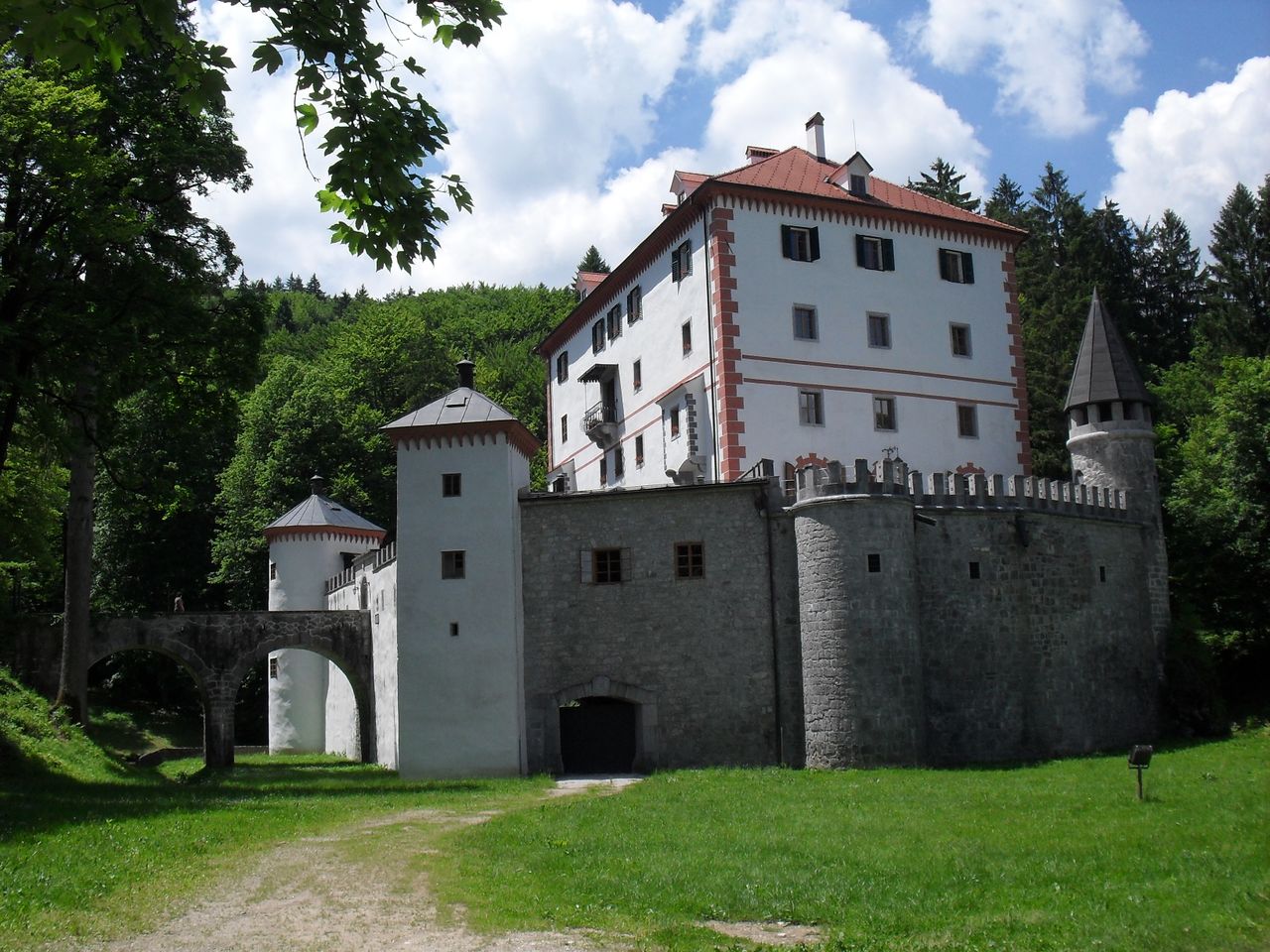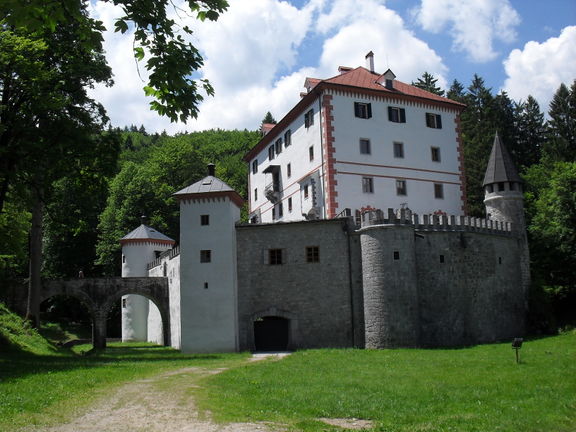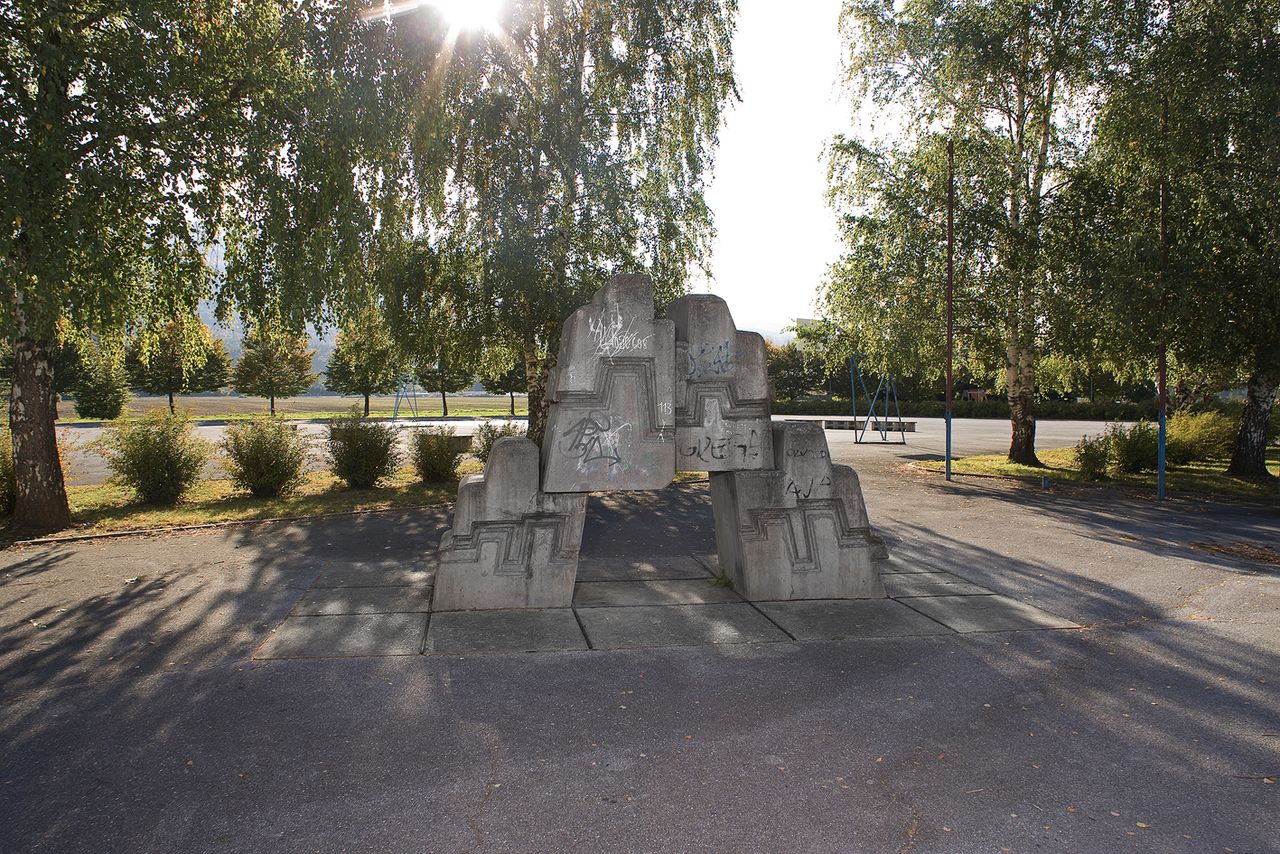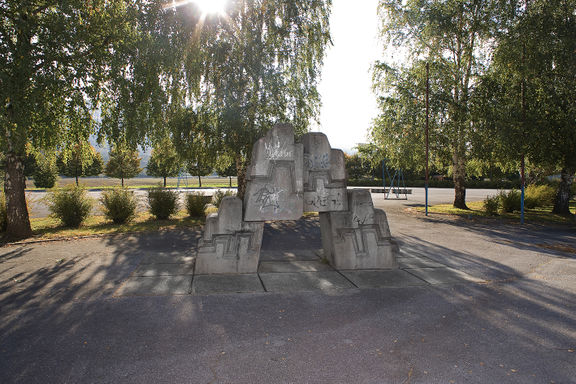 Snežnik Castle, being the only Slovene Castle with genuine furnished interiors, came under the administration of the National Museum of Slovenia after its restoration in 2008.
Snežnik Castle, being the only Slovene Castle with genuine furnished interiors, came under the administration of the National Museum of Slovenia after its restoration in 2008.
The earliest record of Snežnik Castle dates from 1269 when it was owned by the patriarchs of Aquileia. The castle lies on a strategic site, on the edge of the Lož Valley under the Snežnik mountains surrounded by a beautiful park and vast forests with diverse and rich flora and fauna including big game ranging from bears, boars, wolves and lynxes, to wild fowl and deer, and was always favourite hunting residence. Throughout the centuries the castle has changed owners many times, but in 1853 the castle and associated forests of Snežnik were bought by German Prince Otto Viktor Schönburg-Waldenburg, who gave it to his third son Georg. Thereafter it remained in the Schönburg-Waldenburg family until 1945. The last caretaker Leon Schauta saved Snežnik Castle from destruction after the Second World War by keeping good relations with the locals before and after the war. Restoration began in the 1960s and the castle opened to the public in 1970/71. In 1983 two additional exhibition rooms were opened. After a restoration completed in 2008, the romantic state-owned castle came under the administration of the National Museum of Slovenia and is the only Slovene Castle with genuine furnished interiors.
Since 2014 the Floating Castle Festival has embedded into the picturesque surroundings of the castle the late summer "folk-puppet-music-theatre site-specific event".
NOT ROBOT, WRITING DONE, INFOBOX DONE, PROOFREAD DONE, FERTIK, NOVERIFY, NODEPO, PHOTO, FEATURED, Article, NO LOGO, HAS MAP, Museums, Monuments and sites, Articles maintained by Ivan Pirnat, Castles, COVER

 A concrete sculpture by Dragica Čadež Lapajne (SI), made in 1986 and standing in front of the Primary School Gustav Šilih in Maribor, 2008
A concrete sculpture by Dragica Čadež Lapajne (SI), made in 1986 and standing in front of the Primary School Gustav Šilih in Maribor, 2008
Forma Viva Open Air Sculpture Collection, Maribor is one of several in Slovenia which arose under the auspices of the International Symposia of Sculptors called Forma Viva, an innovative project conceptualised as a regular gathering of artists from all over the world. They were invited to create various, often monumental sculptures according to their particular vision and style. These works are then incorporated into publicly accessible collections that bear the name of Forma Viva as well.
Each of the venues of the Symposia chose a site-specific policy for the materials used. Maribor's Forma Viva was conceptualised as a distinctively urban project that was supposed to reflect the expanding urban fabric of Maribor. Correspondingly the works, dispersed throughout the city, are made of reinforced concrete.
NOT ROBOT, WRITING DONE, INFOBOX DONE, PROOFREAD DONE, FERTIK, NOVERIFY, NODEPO, PHOTO, FEATURED, Article, NO LOGO, Articles maintained by Anže Zorman, Updated 2017, HAS MAP, Visual arts, Museums, Visual arts museums, Monuments and sites, Forma Viva Collection







